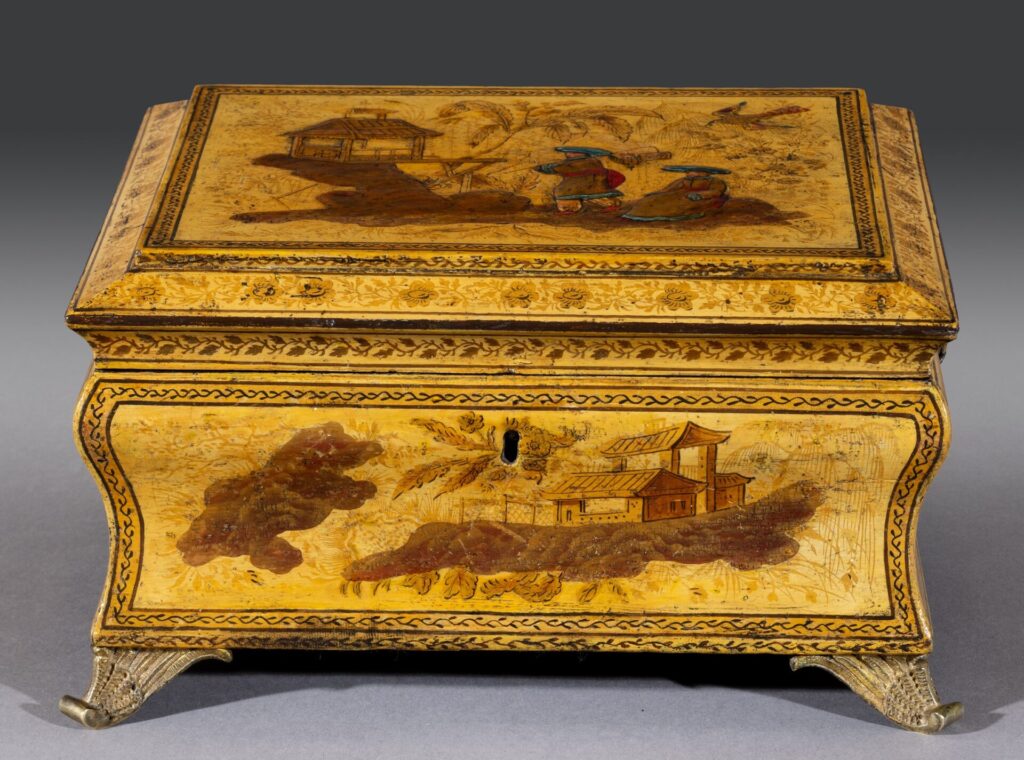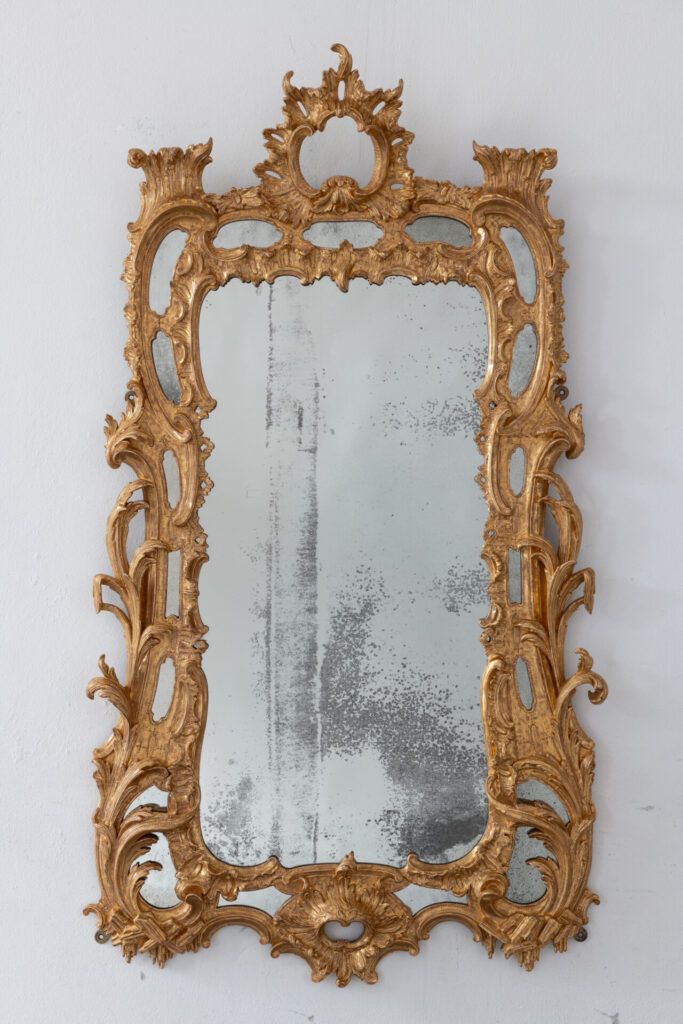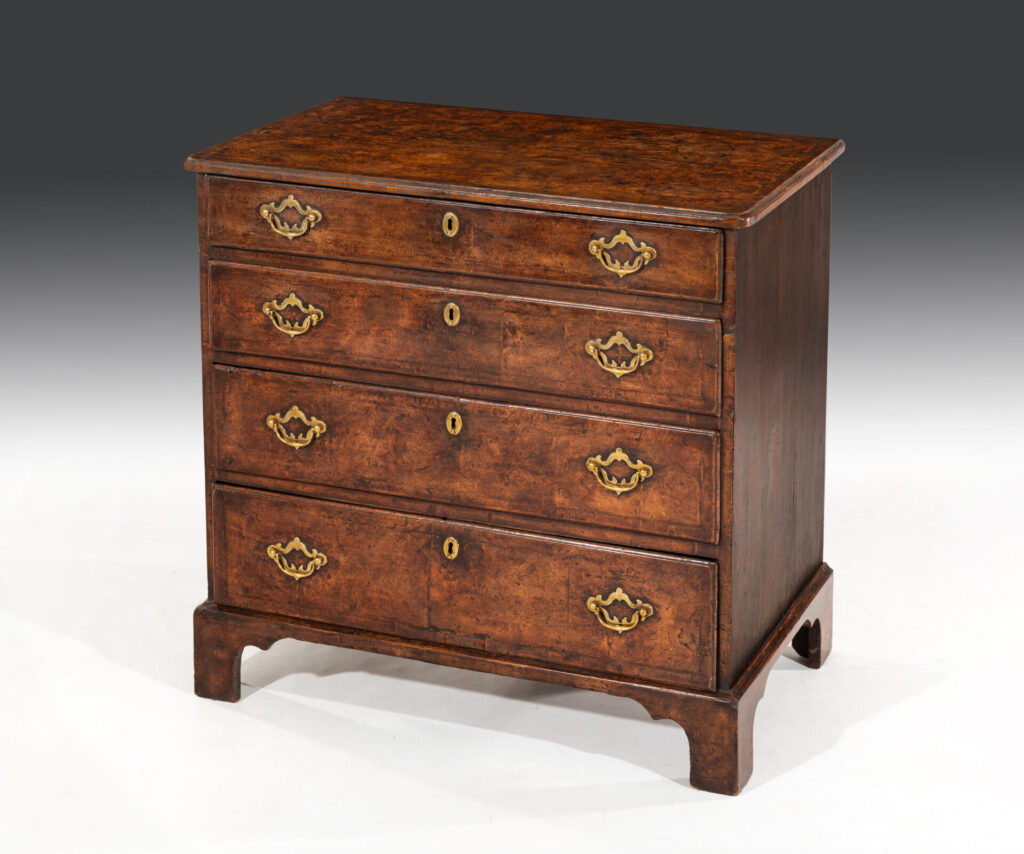Impressive Ceylonese Coromandel Centre Table
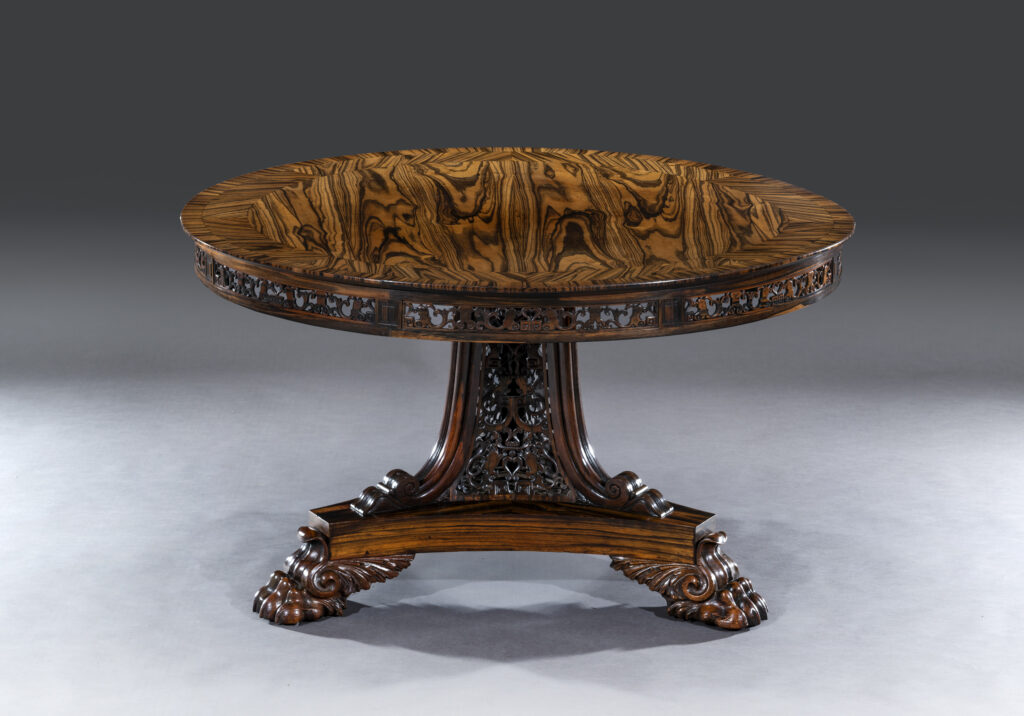
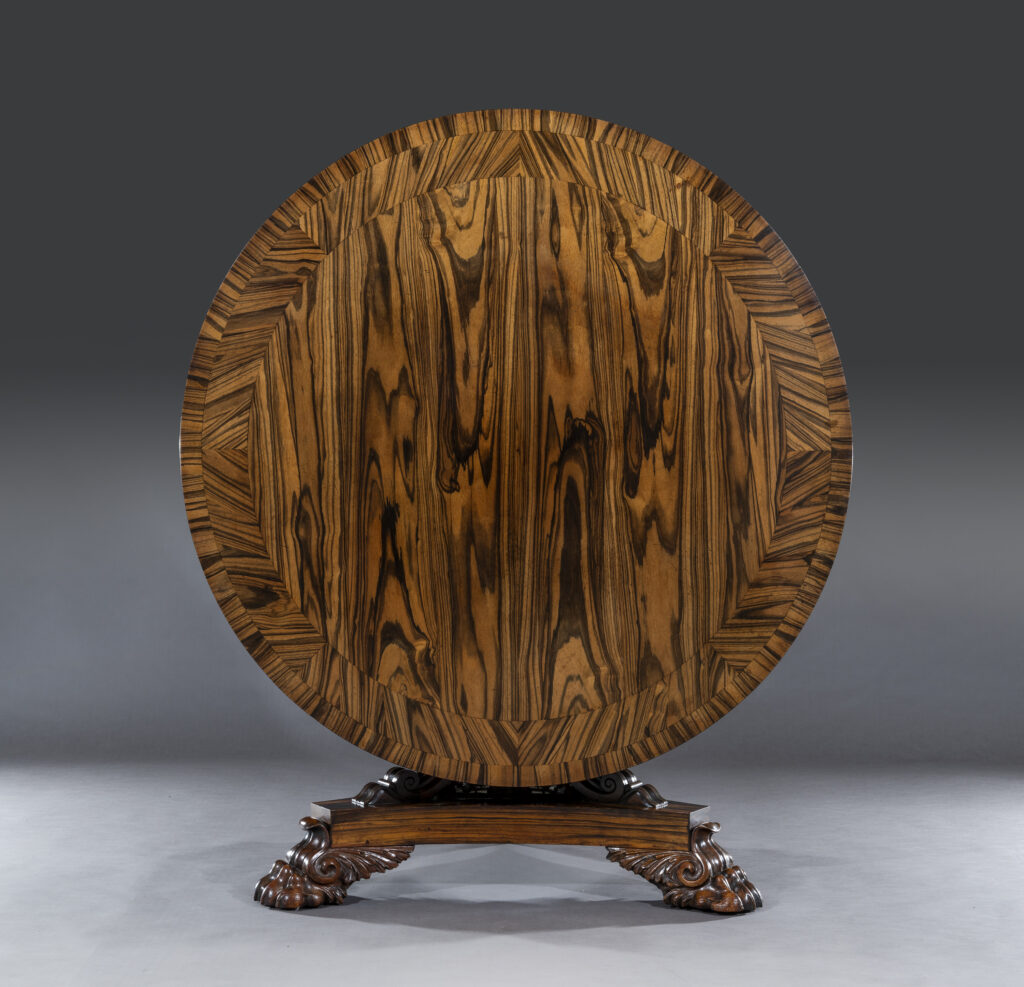
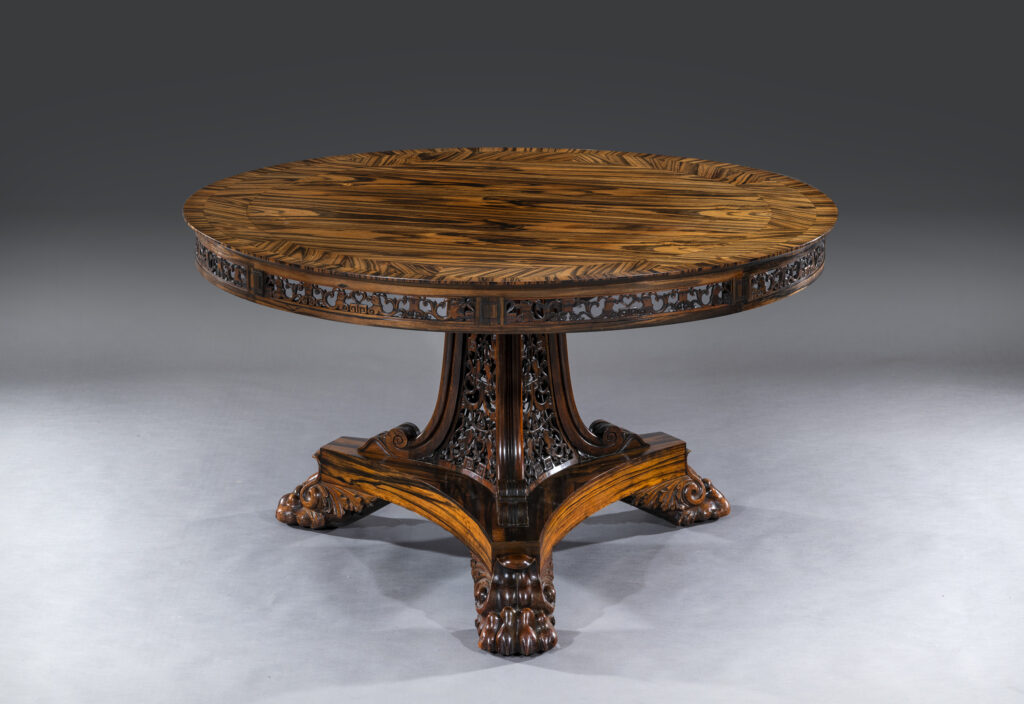
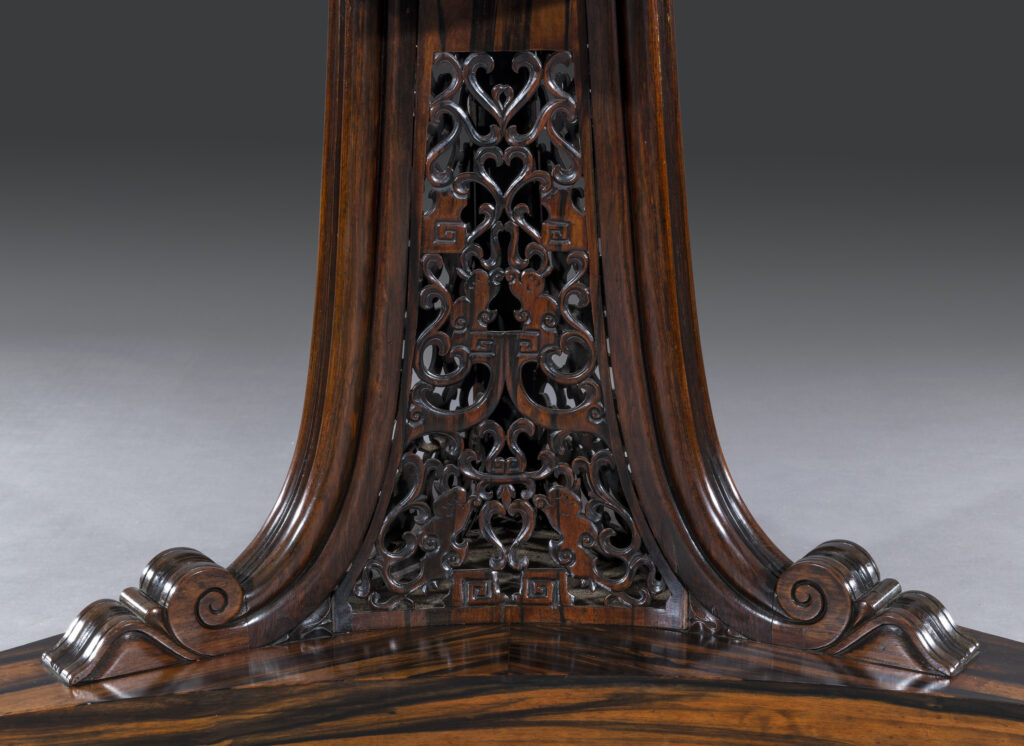
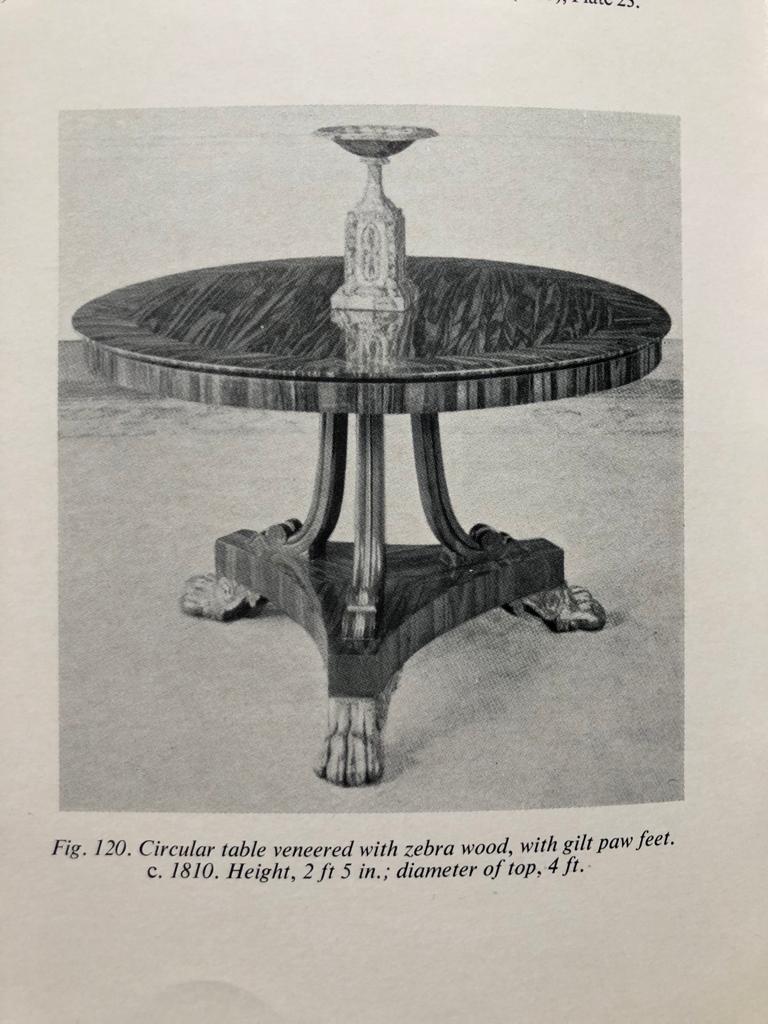
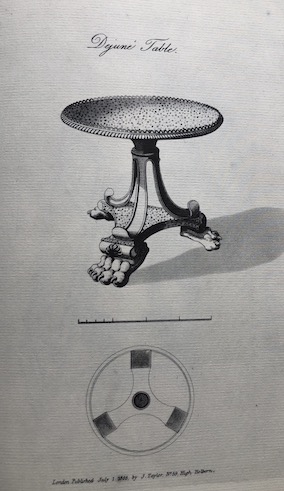
Impressive Ceylonese Coromandel Centre Table
ceylon
circa 1830 - 1840
Rare coromandel centre table from the early 19th century.
The highly figured circular top is decorated with book-matched veneers and crossbanded with a double banding of quarter cut veneers and a smaller outer banding of horizontal cut veneers. The top is very lively with a crossbanded coromandel edge that smooths off to rounded inward tapering. This fine detail sits above a shallow frieze that is intricately carved and made in sections. The open fret carving has an Asian style and depicts mystical shapes, centralised with hearts.
The table sits on an open fret triform pedestal base, crossbanded in coromandel adorned with solid bold scrolled supports that stand on a plinth base. The table is raised on imposing hairy paw feet with crisply carved acanthus leaf decoration and scrolls that stand on the original gilt brass concealed castors.
George Smith was cabinet and furniture maker to His Royal Highness, the Prince of Wales, and he published furniture designs that helped define the Regency style. Smith was most well known for cabinet making and upholstery during the first quarter of the 19th century and was spoken of in the same breath as contemporaries Henry Holland and Thomas Hope. He made furniture in a wide, eclectic range of tastes based generally on the late neo-classical style, but also including neo-gothic style work and chinoiserie. He produced several pattern books the first being 'A Collection of Designs for Household Furniture and Interior Decoration' in 1808 in which he interpreted and popularised the somewhat austere designs delineated in Thomas Hope’s earlier publication, ‘Household Furniture’, and Peter & Michael Angelo Nicholson’s work, ‘The Practical Cabinet-Maker, Upholsterer and Complete Decorator’.
Other Influences of Design:
Peter & Michael Angelo Nicholson furniture designed and produced by the Nicholsons. Peter Nicholson (1765-1844) trained as a cabinet maker in Edinburgh before moving to London at the age of twenty-three, later practising as an architect and writing many text books on carpentry, building, perspective and mathematics. His son Michael Angelo (c.1796-1842) worked with his father and in 1826 they collaborated to produce a much acclaimed book, ‘The Practical Cabinet Maker’, which illustrated the rich profusion of naturalistic leaf carving blended with classical motif, so typical of their work.
Condition
Excellent untouched condition
Literature
Coromandel wood, sometimes known as Calamander, is one of the most valuable, decorative hardwoods. It is a variety of ebony, Diospyros Macassar, or Macassar ebony (variegated ebony), which comes from India and South East Asia. It has the most dramatic colouring: hazel brown interspersed with black or charcoal grey stripes. The name ‘calamander’ comes from Coromandel, referring to the Coromandel Coast in India from where it was exported. It was used in furniture, luthiery and for sculpture.
It is an exceptionally heavy, dense, close-grained wood, which takes an especially long time to season. Notoriously hard to work, it quickly blunts tool edges; it can be brittle, which is why it was often used in veneer form rather than in the solid. It was valued not only for its beauty, but also for its beautiful smooth surface, and its resistance to shrinkage and warping.
First imported to the Low Countries in the 17th century, it was occasionally used for veneering cabinets and mirror frames. Then, at the end of the 18th century, with the advent of Sheraton and his elegant, decorative designs, it became popular as an inlay, giving a dramatic contrast to mahogany or satinwood in the form of stringing or banding. Very occasionally used in the solid to make chairs, it remained a favourite of the Regency period, lending itself to the exotic and precisely detailed furniture of the day.
As ebony was so rare and expensive, by the 19th century, a method was developed to imitate ebony, known as ‘ebonising’. The black stain was obtained by boiling log-wood in vinegar, brushing on to pear wood, and then applying a solution of oak gall (used in the preparation of ink) and copper vitriol. It looks very convincing but is easily detected by the modern restorer: the acid corrodes the pear wood over time and it quickly crumbles to dust when touched with a chisel!
The Victorians particularly liked the flamboyant, exotic colouring of Coromandel, and used it occasionally for fine, expensive pieces, in the solid.
By the beginning of the 20th century, Coromandel became virtually extinct. It was logged to extinction over the last two to three hundred years and is no longer available for new work in any quantity. Furniture in Coromandel is so expensive and so well looked after that even recycling it is an unlikely source. A substitute, Macassar ebony, has similar characteristics and to the untrained eye is nearly the same but it lacks the depth of colour seen in genuine Coromandel.
Our table is very similar to one featured in Margaret's Jourdain's 'Regency Furniture', revised by Ralph Fastnedge. There is a drawing of the table featured, and the cover of the publication, in the images above.
Dimensions
Height 74.00cm (29.13 inches)
Diameter 127.00cm (50 inches)
Stock No: 10685
£24,500.00
In-stock

